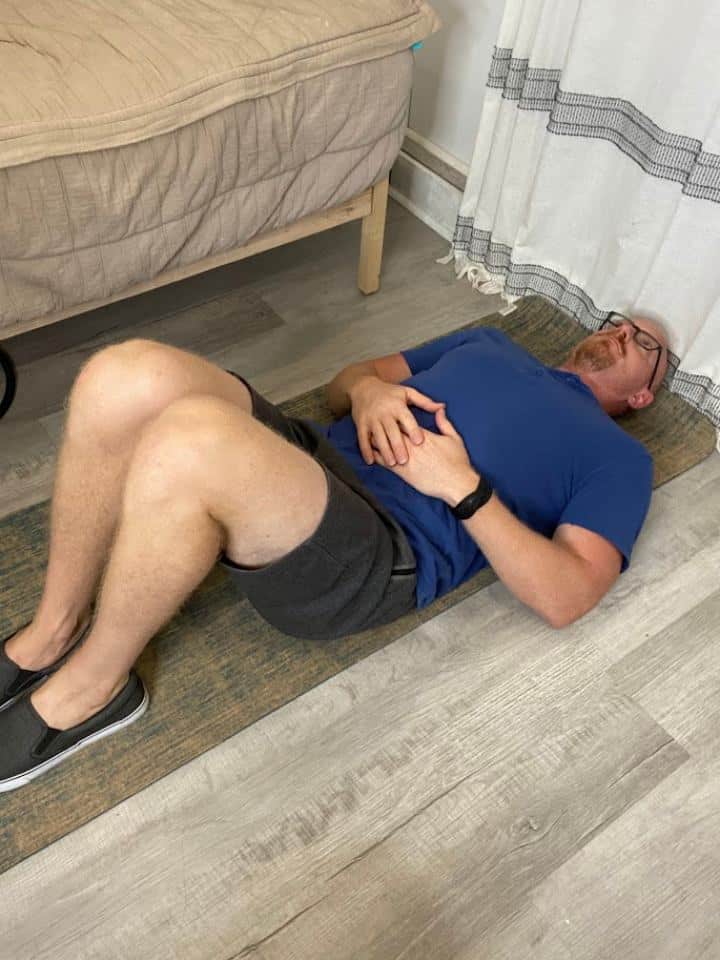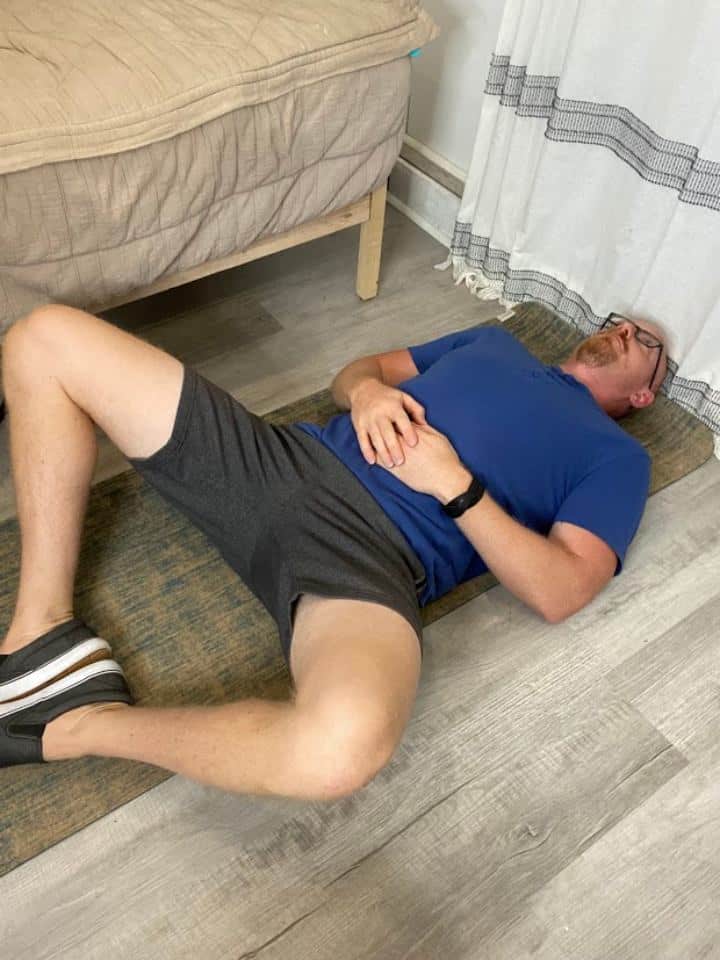Free download: Top 10 Natural & Easy Remedies for Joint Pain from Home. Learn these helpful remedies.
Estimated Reading Time: 7 minutes read
Hip tendonitis is an inflammation or irritation of the tendons in the hip area. These tendons are thick bands that connect muscles to bones. When functioning correctly, they ensure our movements are smooth and coordinated. However, like any other body part, these tendons can become compromised.
When these tendons are overused, injured, or strained, it leads to hip tendonitis. This condition can significantly limit our day-to-day activities, causing discomfort and pain in and around the hip area.
Table of Contents
Causes and Symptoms of Hip Tendonitis
Several factors can contribute to hip tendonitis:
- Overuse: Engaging in repetitive motions, especially in sports or strenuous exercises.
- Improper Technique: Incorrect form during activities can increase strain on the hip tendons.
- Age: As we grow older, our tendons can become more susceptible to injuries.
- Underlying Medical Conditions: Conditions like rheumatoid arthritis can make individuals more prone to tendonitis.
The common signs of hip tendonitis include:
- Pain in the hip or outside of the hip that worsens with activity.
- Stiffness in the hip after periods of rest or upon waking up.
- Swelling or warmth around the affected area.
- Reduced range of motion in the hip.
Once you recognize the symptoms and understand the potential causes of hip tendonitis, it’s crucial to approach recovery with caution and care.
Awareness plays a key role: knowing when to push yourself and when to rest can be the difference between healing and exacerbating the issue. As you move forward, tailoring your exercises to address your specific needs and symptoms becomes vital.
Tips for Safe Exercises
Before you embark on any exercise regimen, keeping safety in mind is essential. Especially with conditions like hip tendonitis, where incorrect movement can further strain already compromised tendons. Ensure you follow these safety measures:
- Warm-Up: Before starting any exercise, ensure you warm up sufficiently to prepare your body.
- Stay Within Pain Threshold: Never push yourself to the point of pain. If an exercise hurts, stop or adjust.
- Consistency Over Intensity: It’s more important to be consistent than to push too hard and risk further injury.
- Cool Down: Post-exercise stretches help in reducing muscle stiffness.
- Seek Expert Guidance: If in doubt, consult with a physiotherapist or fitness professional.
Taking precautions ensures that your recovery process is smooth, preventing any further complications or injuries.
Mobility Exercises for Hip Tendonitis Relief
Maintaining mobility is crucial when dealing with hip tendonitis. Regular stretching can enhance joint flexibility, reduce stiffness, and alleviate pain. Here are some recommended stretches:
1. Sitting Hamstring Stretch


- Seated in a chair, place the leg to be stretched and extended in front of you (the knee should be straight).
- Keeping a straight back, bend forward via hinging at the hips.
- Once you feel a tolerable stretch behind the back of the leg, hold for at least 30 seconds.
- Repeat for 3 sets in total.
2. Standing Hip Flexor Stretch


- Begin standing in front of a sturdy surface, such as the countertop, in case you need additional balance support.
- Position the unaffected leg forward and the painful leg back (the further apart the legs are, the stronger the stretch for the hip flexors).
- The front leg should have a bent knee, while the other knee in the back should be straight.
- Lean the body forward towards the front leg until a stretch is felt in the front of the hip in the back leg (make sure to keep both heels on the ground).
- Hold the stretch for at least 30 seconds.
- Repeat 3 times.
3. Piriformis Stretch


- Begin by lying on your back with both knees bent.
- Cross your left leg over your right, then using both arms gently pull your left knee towards your right shoulder.
- Hold for 30 seconds. Relax and repeat 3 sets on the each leg.
4. Butterfly Stretch


- Begin on your back with your knees bent and feet flat on the surface (you can lay on your bed, couch, or floor). The feet and knees should be together.
- Slowly allow the knees to open apart from each other. Allow the thighs to move towards the floor as far as the hips allow.
- Make sure to avoid arching in the low back.
- Try to hold the stretch anywhere from 30-60 seconds.
Regular mobility exercises are crucial to regain your hip’s full range of motion. They alleviate pain and ensure your muscles and tendons remain flexible and strong.
Building Strength to Combat Hip Tendonitis
Strength exercises focus on building the muscles around the hip joint. A strong core and hip are vital for supporting and reducing the strain on the tendons. Here are some exercises to incorporate:
1. Clamshells


- Start by laying on your side with both knees bent.
- Keep your feet in contact with each other, and then rotate your top leg up. Ensure you keep your spine aligned and your hips don’t rock back! The rule of thumb is to do a smaller range of motion if you think your back is moving.
- Rotate your top leg back down to the starting position.
- Do this exercise 10 times in each set.
- Complete 3 sets of the exercise.
2. Side-Lying Hip Lifts


- Lay on your side with your bottom knee bent and your top leg straight. Look down your body to see if your top leg is in line with your trunk. It’s common for the top leg to swing forward a little, so you may have to bring your top leg back an inch or two so that your body is in a straight line from the tip of your head to the tip of the foot on your straight leg.
- Slowly lift your top leg towards the ceiling about 6-12 inches, keeping your leg in line with your body, don’t let it float forward. Then lower your leg back down.
- Keep your hips and shoulders square to the wall in front of you while your leg moves.
- Try to complete 3 sets of 10 on each side if you don’t feel increased pain.
3. Standing Hip Extension


- Stand tall with your hands placed on a steady surface. You can use a counter, sink, or chair (no chairs with wheels) to hold on to for balance.
- Shift your weight onto your left leg, keeping a soft bend in your left knee to keep it from locking out.
- Then, keeping your toes pointed forward and your right leg straight, lift your right leg back a few inches, then lower back down.
- Repeat 10 times per leg for 3 sets.
4. Bridges


- Lie on your bed or floor (a bed is better if you have difficulty getting on the floor). Again, ensure your knees are bent at about 90 degrees and your feet are flat on the floor.
- Lift your hips off the ground, using your hands to help push your hips up if needed.
- Slowly lower your hips to the bed or floor and repeat 10 repetitions for 3 sets.
5. Full Leg Lifts


- Lie on your back with one leg bent and the other leg straight and together.
- Lift your straight leg up towards the ceiling, raising your buttocks off the floor.
- Slowly lower your leg back down, stopping just above the floor. Hold for 5 seconds briefly.
- Repeat the movement for 10 repetitions and 3 sets.
Strengthening your hip and core muscles will provide better support to your tendons. This, in turn, minimizes the chances of recurring issues and ensures a healthier hip function.
In Conclusion
Hip tendonitis can be debilitating, often impeding our daily functions and routines. However, with the right approach to exercise, it is possible to manage and even overcome much of the discomfort associated with it. Taking small, consistent steps towards better hip health can bring about significant changes over time.
Remember, remaining patient and understanding of your body’s limits is essential. Every individual’s recovery journey is unique. Prioritize your well-being, and don’t hesitate to seek professional help if needed. Your path to a pain-free hip is well within reach.













